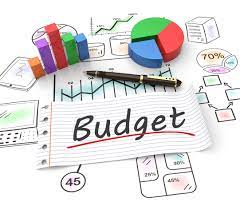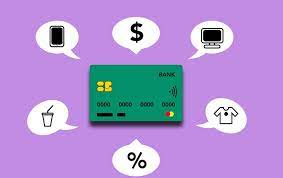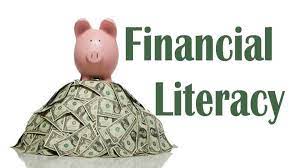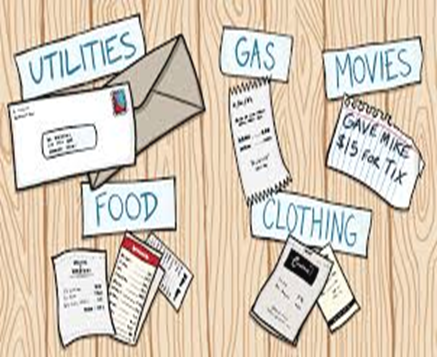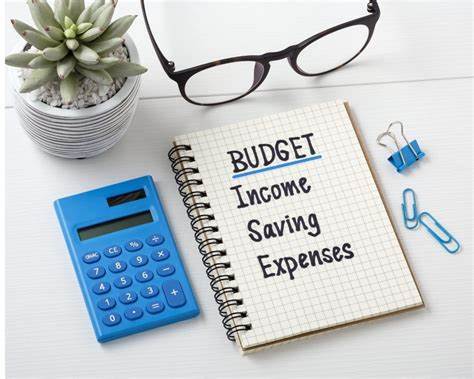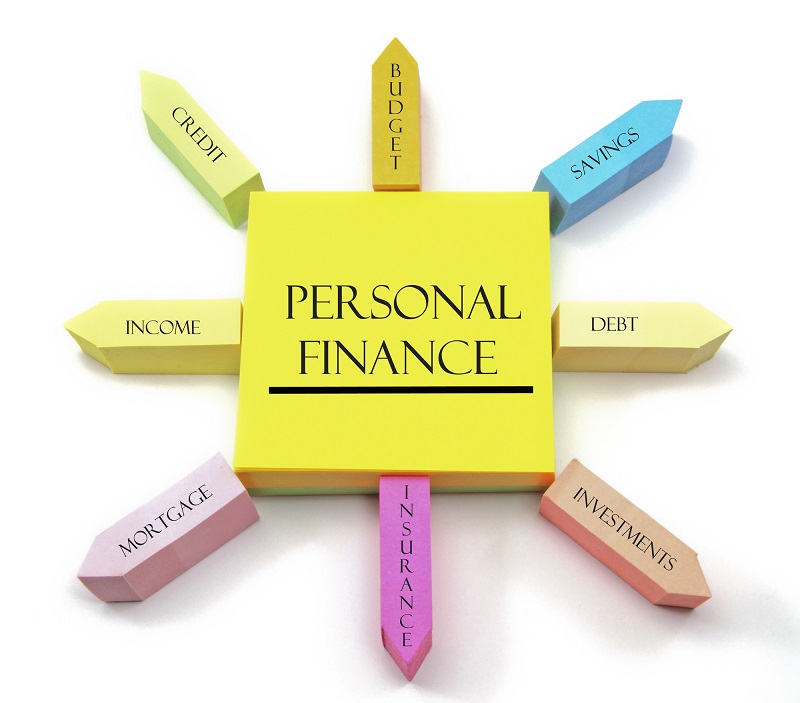Available courses
Time Value of Money
In this course, students will explore the fundamental concepts of financial literacy that revolve around the concept of time value of money. Students will dive deep into understanding how money today is worth more than money in the future, and how this concept affects various financial decisions. Throughout the course, students will learn how to determine the future value of an investment or a sum of money, taking into consideration factors such as interest rates, compounding, and the time period involved. Students will explore different compounding methods, such as annual, semi-annual, quarterly, and monthly, and understand their impact on the future value of your investments.
Additionally, students will delve into the concept of present value versus future value. You will gain a comprehensive understanding of how to calculate the present value of future cash flows, considering factors like discount rates and the time value of money. By the end of this course, students will have a solid foundation in understanding the time value of money, determining future value and compounding, and evaluating the present value versus future value. Students will be equipped with the knowledge and skills necessary to make informed financial decisions and optimize your investments.
Join us on this exciting journey to enhance your financial literacy and empower yourself with the tools to navigate the world of finance confidently. Get ready to unlock the secrets of the time value of money and master the art of making sound financial choices!
- Teacher: Super Administrator
- Enrolled students: 1
Financial Literacy (FREE)
This FREE financial literacy course is designed to develop your knowledge and skills to make sound, informed financial decisions that will allow you to lead financially secure lives and understand personal financial responsibility. This course will define financial literacy, discuss its benefits, define the difference between savers and spenders, and discuss how financial literacy can affect your future. Financial literacy combines personal finance, financial concepts, and financial planning to help individuals build wealth and establish long-term stability.
- Teacher: Super Administrator
- Enrolled students: 3
Paying for College course is designed to provide students with the essential knowledge and skills needed to navigate the complex world of financing higher education. This course aims to empower students to make informed decisions regarding paying for college and to understand the impact of these decisions on their financial future.
Throughout the course, students will explore a range of options available to pay for college, including scholarships, grants, work-study programs, and student loans. By examining these options in detail, students will develop a comprehensive understanding of the pros and cons associated with each method of financing.
Students will delve into the intricacies of college loans, understanding different interest accumulation methods, and exploring various payback options. They will gain the knowledge and tools necessary to effectively manage their student loan debt, including strategies for repayment and loan forgiveness programs.
A significant aspect of the course will focus on the Free Application for Federal Student Aid (FAFSA). Students will learn the basics of the FAFSA, including how to complete the application accurately and efficiently. They will gain insights into the factors that influence financial aid eligibility and the various types of aid available, such as grants, scholarships, and work-study opportunities. Additionally, students will learn how to compare financial aid packages from different colleges to make informed decisions about their college choices.
By the end of the course, students will develop a solid foundation in financial literacy, equipping them with the skills to make informed decisions about financing their college education. They will have the tools to assess the financial implications of their choices and understand the long-term impact of their financial decisions on their personal and professional lives.
- Teacher: Super Administrator
- Enrolled students: 1
The "What is a Stock?" financial literacy course is designed to provide participants with a comprehensive understanding of stocks and their significance in the world of finance. This course aims to equip individuals with the knowledge and skills necessary to navigate the stock market, make informed investment decisions, and build a strong foundation for financial success. Throughout the course, participants will explore the fundamental concepts of stocks, including their definition, types, and how they function within the broader financial ecosystem.
Students will also gain insights into the role of stocks in wealth creation, portfolio diversification, and long-term financial planning. By the end of this course, participants will have a solid understanding of stocks, enabling them to confidently navigate the stock market, evaluate investment opportunities, and make informed decisions to enhance their financial well-being. Whether you are a novice investor or seeking to expand your financial literacy, this course will provide you with the essential knowledge to thrive in the world of stocks.
- Teacher: Super Administrator
- Enrolled students: No students enrolled in this course yet
This course provides a comprehensive overview of income tax filing and the Form 1040. Participants will gain a deep understanding of the key concepts and processes involved in filing income tax returns accurately and efficiently.
The course covers topics such as income sources, deductions, credits, and exemptions, with a focus on maximizing tax savings and minimizing errors. Participants will learn how to navigate the Form 1040. The course covers topics such as who needs to file income taxes, the W2 and 1099, the 1040 income tax return, and making income tax corrections and audits.
By the end of the course, students will have a solid foundation in income tax filing and the Form 1040, enabling them to confidently navigate the complexities of tax preparation and achieve optimal results for themselves or their clients.
- Teacher: Super Administrator
- Enrolled students: No students enrolled in this course yet
In today's information age, keeping your personal financial information private can be challenging. What you put on an application for a loan, your payment history, where you make purchases, and your account balances are but a few of the financial records that can be sold to third parties and other organizations. This course will discuss how public and private records are accessed and used by various organizations, as well as review privacy laws to protect your information. Direct mail, credit reports, telecommunications, and Social Security numbers will be considered from the standpoint of what consumers can do to protect their privacy rights.
In addition, students will learn about their options as a consumer and ways to "opt out" of database profiles. Students will also learn about privacy in the workplace and the various issues related to their personnel files, electronic mail monitoring, and laws to protect their rights.
- Teacher: Super Administrator
- Enrolled students: No students enrolled in this course yet
The material in this course will help students become aware of the warning signs of financial difficulties. When difficulties arise, students should first contact their creditors. Next, efforts should be made to revise spending patterns. In addition, assistance from a member of the National Foundation for Consumer Credit service agencies might be considered. What if these actions do not help?
In the next sections of the lesson, students will examine other actions that might be considered, such as debt consolidation loans and bankruptcy. Students should also be aware of fair debt collection practices and wage garnishment.
- Teacher: Super Administrator
- Enrolled students: No students enrolled in this course yet
Saving just 35 cents a day will result in more than $125 in a year. Small amounts saved and invested can easily grow into larger sums. However, a person must start to save. This lesson provides students with a basic knowledge of saving and investing. The process starts with setting financial goals. Next, a commitment to saving is discussed. Various savings plans are available to consumers. These include regular savings accounts, money market accounts, and certificates of deposit (CD).
Then, students will analyze factors to consider when selecting a savings account. These include interest rates, fees, balance requirements, and deposit insurance. Investing takes saving one step further in a person’s financial plan. Bonds, stocks, mutual funds, real estate, and retirement accounts are covered in the next section of this lesson.
Finally, students are made aware of potential investment frauds. The variety of these swindles increases each year as con artists look for new opportunities to separate people from their money.
- Teacher: Super Administrator
- Enrolled students: No students enrolled in this course yet
Decisions, decisions. With so many choices available to us, how can we be sure we're making the right decision? Wise consumer buying starts with a plan. Using a systematic purchasing strategy will provide students with an ability to make more effective purchases. Comparative shopping techniques will be discussed to encourage students to carefully consider price, product attributes, warranties,and store policies.
Next, this lesson covers a variety of buying methods, such as buying clubs, shopping by phone, catalogs, online, and door-to-door selling. Consumer buying makes a person a target for various consumer scams. While fraud in the marketplace is not new, the methods used have kept up with technology. Telemarketing fraud and deceptive internet promotions result in consumers losing billions of dollars each year. What actions should a person take to resolve a consumer problem? This question is answered with several suggestions in the next section of this lesson.
Finally, students will learn about sources of help available to them through government agencies and other organizations.
- Teacher: Super Administrator
- Enrolled students: No students enrolled in this course yet
In today's modern world, advertising seems to be everywhere we look; online, television, billboards, magazines, newspapers, on buses, grocery carts, even cell phones. In addition, some forms of advertising can be subliminal, such as the strategically-placed soda can in a movie. We can't help but be influenced and manipulated as consumers.
In this lesson, students will become aware of the various techniques and appeals used to influence consumer behavior. Warnings must also be sounded. Unethical selling techniques such as “bait and switch,” as well as common deceptive promotions like “get rich quick schemes” are discussed here. This is followed by information on program-length commercials, also called “infomercials.”
Finally, students are asked to develop guidelines for viewing and evaluating advertising. This skill will prepare them to make rational decisions in our very complex and evolving marketplace.
- Teacher: Super Administrator
- Enrolled students: No students enrolled in this course yet
“Should I buy a new car or a used car?” “Where is the best place to finance my automobile purchase?” “Is it better to take the rebate or the low-rate financing plan?” These are typical questions asked by people buying vehicles. In this lesson, students are asked to identify costs associated with owning and operating a motor vehicle. Since these costs are commonly underestimated, guidelines are provided on how much to spend when buying vehicles.
The material provided in this lesson will address the many factors and decisions involved in purchasing and financing a vehicle. In addition to comparing used and new cars, we also cover warranties, service contracts, and financing the purchase. Other issues related to using credit for buying a car include the information required by the Truth-in-Lending law, use of a co-signer, and repossession.
Finally, various aspects of auto insurance are discussed. Students will learn about types of coverages, factors affecting insurance costs, and comparing insurance companies.
- Teacher: Super Administrator
- Enrolled students: No students enrolled in this course yet
What is APR? What is a grace period? What are transaction fees? These and other questions will be answered in this course as students learn about credit cards, and the different types of cards available and features of each, such as bank cards, store cards, and travel and entertainment cards. As students start to shop for their first (or next) credit card, this lesson will make them aware of various costs and features.
Included in this section is a discussion of the methods for calculating finance charges.Various federal laws protect our rights as we apply for and use credit cards, such as procedures for disputes and protection from card theft and fraud. In this lesson, students will also be given an opportunity to analyze the information contained on a credit card statement. To assist students with making wise decisions related to credit cards, several shopping tips are offered.
Finally, once again, students are reminded of guidelines related to determining safe debt loads.
- Teacher: Super Administrator
- Enrolled students: No students enrolled in this course yet
In today's world, credit is integrated into everyday life. From renting a car to reserving an airline ticket or hotel room, credit cards have become a necessary convenience. However, using credit wisely is critical to building a solid credit history and maintaining fiscal fitness. While most students have a general idea about the advantages and disadvantages of credit, this lesson provides an opportunity to discuss these issues in more detail.
Young people and others commonly wonder how to establish credit. In this module, students will learn about the creditworthiness factors of character, capital, and capacity in order to help them gain an understanding of how to start and maintain a credit record. This course will also introduce students to different types of credit: single-payment credit, installment credit, and revolving credit.
Finally, this section will educate students about how much credit might be appropriate for their situation.
- Teacher: Super Administrator
- Enrolled students: No students enrolled in this course yet
If the fee for an ATM transaction to withdraw money is $1 and a person withdraws money twice a week, the banking fees for that person will be $104 a year. Over a five-year period, those fees invested at five percent would grow to more than $570. Most students know that banks and other financial institutions (credit unions, savings and loan associations) offer a variety of services. However, few people know how to make wise choices when using financial services. In this course, students will learn about the different types of financial service products available and the features of each. When selecting a checking account, remind students to consider the required balance, monthly fees, interest earned, cost of printing checks, and charges for other fees and services.
- Teacher: Super Administrator
- Enrolled students: No students enrolled in this course yet
For many, buying a home is the single most important financial decision they will make in their lifetime. However, the process of becoming a first-time homebuyer can be overwhelming, and requires a foundation for basic home-buying knowledge. This lesson will provide students with information on buying a home and where and how to begin the process.
After comparing the differences between renting and buying, students will be introduced to a five-step process for home buying. This framework provides an overview for the activities involved with selecting and purchasing a home. “What type of mortgage should I select?” This common question will be covered, as well as what lenders look for when qualifying an applicant for a home loan. Next, the costs associated with finalizing a real estate purchase, or “closing costs,” are discussed.
Finally, students are put on the other side of the real estate transaction—as a seller. Several suggestions are offered for selling a home.
- Teacher: Super Administrator
- Enrolled students: No students enrolled in this course yet
As young people grow up, a common goal is to live on their own. However, the challenges of independent living are often quite different from their expectations. This lesson provides a reality check for students as they investigate the costs associated with moving, obtaining furniture and appliances, and renting an apartment. In preparation for living on their own, students are reminded of the budgeting process.
In this lesson, we will encourage students to carefully consider various fixed and flexible expenses. In addition, they'll learn budgeting strategies for both flexible expenses (variable costs that change depending on level of consumption), such as entertainment, restaurants, and vacations, and fixed expenses (those that need to be paid every month), such as rent and apartment insurance. As students start the apartment selection process, many factors will be considered. Where to live, how much to pay for rent, whether to share an apartment with a roommate, and what type of lease to sign, are just a few topics that will be addressed.
Many students are probably not aware of the many important elements of a lease. In this section of the lesson, various information sections and clauses of an apartment lease are discussed. This material can help to create awareness and caution among students before signing a lease (or other contracts).
- Teacher: Super Administrator
- Enrolled students: No students enrolled in this course yet
A personal budget is a financial plan that allocates future income toward expenses, savings, and debt repayment. “Where does the money go?” is a common dilemma faced by many individuals and households when it comes to budgeting and money management. Effective money management starts with a goal and a step-by-step plan for saving and spending. Financial goals should be realistic, be specific, have a timeframe, and imply an action to be taken.
This lesson will encourage students to take the time and effort to develop their own personal financial goals and budget. In this chapter students will monitor their spending habits (in writing) and will be able to better obtain the most value for their available dollars. We will also demonstrate that by carefully considering needs and wants, an individual or family will spend appropriate amounts for current living expenses, while saving and investing for long-term financial security.
- Teacher: Super Administrator
- Enrolled students: No students enrolled in this course yet
Building your career is one of the surest ways to increase income and make money. When planning for the future, one of the most critical financial decisions is determining your career path. In this lesson, students will be encouraged to consider various topics related to career planning and the financial aspects of employment. This variation of the decision-making process can help a person match personal abilities and interests with appropriate employment opportunities. “How does a person apply for a job?” This is a question asked by many students.
First students are informed of sources for identifying available employment positions. Next, various aspects of interviewing are discussed, as well as information on preparing for a job interview along with tips for successful interviewing. Then, financial aspects of employment are considered, including the "hidden costs" of working and employee benefits.
Finally, for students who have not worked in the past, information is offered about payroll taxes and other deductions from a person’s income.
- Teacher: Super Administrator
- Enrolled students: No students enrolled in this course yet
Each day, we are faced with many decisions. While most decisions are simple, such as “what should I wear?” or “what should I eat?,” others are more complex, such as “should I buy a new or used car?”
As decision-making skills are used and improved, a person’s quality of life is enhanced. Wiser choices result in better use of time, money, and other resources.
This introductory lesson provides students with an opportunity to learn more about
decision-making. The lesson starts with an overview of the decision-making process followed by a discussion of various internal and external factors that affect decisions.
People are usually not aware of economic influences that can affect decision-making.
These economic factors include inflation, interest rates, and the unemployment rate. Also, common risks associated with decision-making are often not considered. Students should also be aware of opportunity cost—what a person gives up when a decision is made.
Finally, the lesson concludes with strategies for analyzing the results of decision-making. Students are encouraged to consider their experiences in an effort to improve the quality of future decisions.
- Teacher: Super Administrator
- Enrolled students: No students enrolled in this course yet



